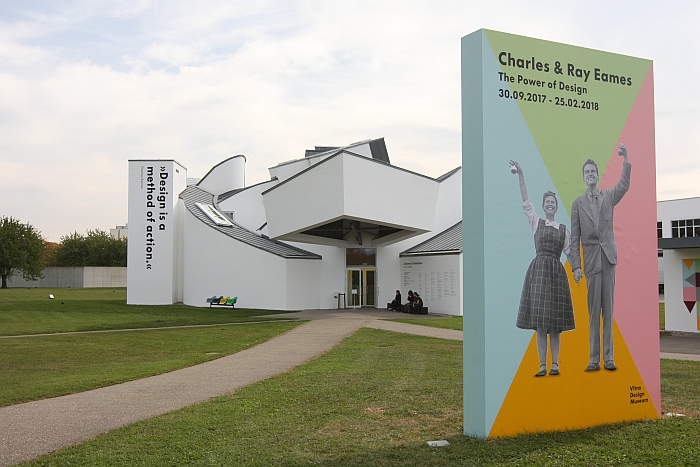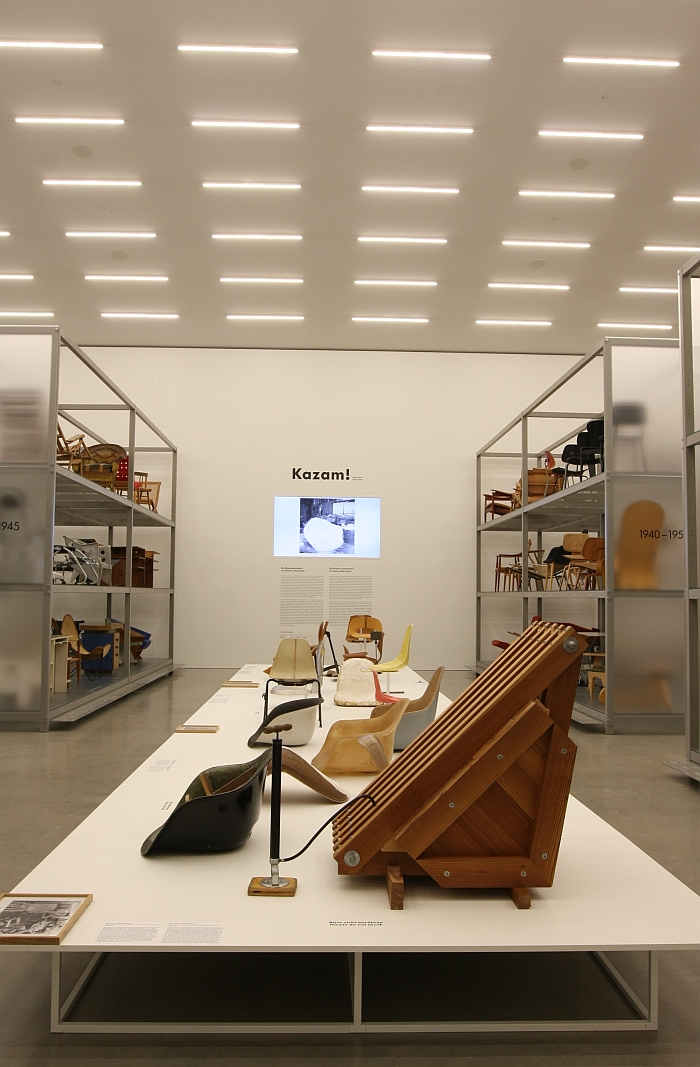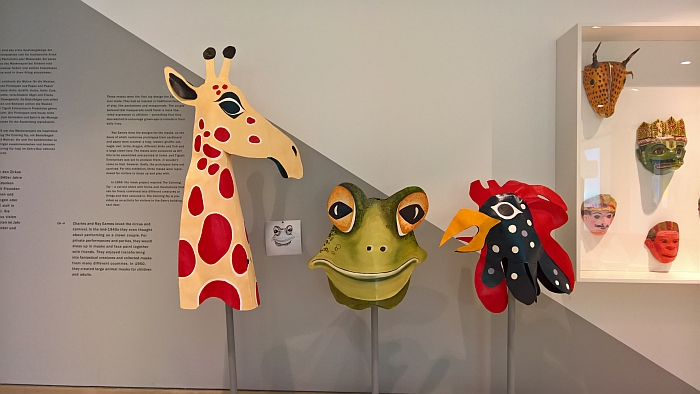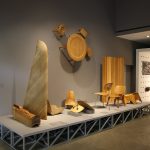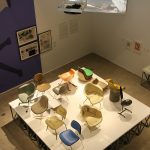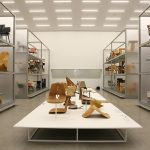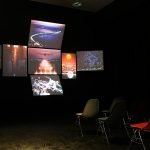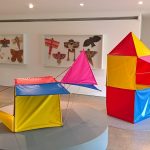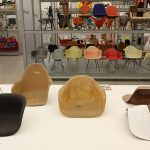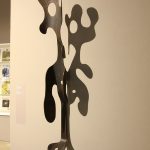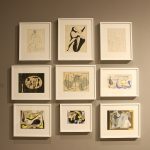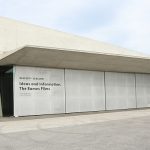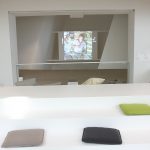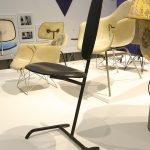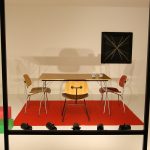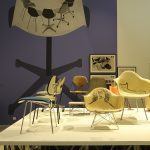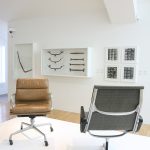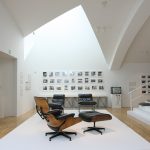An Eames Celebration @ The Vitra Design Museum
With their 1997 exhibition The Work of Charles and Ray Eames the Vitra Design Museum staged one of the first major Charles and Ray Eames retrospectives
Twenty years later they return to two of the 20th century’s most important creatives with An Eames Celebration: less of Charles and Ray, and more of the diversity, depth and continuing relevance of their work.
That it is 20 years since the Vitra Design Museum last dedicated an exhibition to Charles and Ray Eames shouldn’t be taken as an indication in a lack of interest in the subject, far from it, as Museum Director Mateo Kries points out their collection of Eames prototypes and models is one of the cornerstones of the museum; much more the number of other possible themes combined with a desire to always explore the new meant it simply was never a consideration.
The Barbican London’s 2015 exhibition The World of Charles and Ray Eames however caused a moment of reflection, clear as they were that given the scope and scale of the Barbican’s exhibition they themselves would be unable to stage a major Eames exhibition for a goodly few years. Not quite “now or never”, but that sort of position; consequently, they decided not only to show the Barbican exhibition, but to use it as the basis for an exploration of their own on the Eames oeuvre, not least because of the fact 20 years had passed since their last Eames exhibition, or as Vitra Design Museum curator Jolanthe Kugler explains, “since our last exhibition in 1997 an awful lot of new material has come to light, a lot more research has been undertaken, which means we have a much better understanding, for all in context of their film and exhibitions which were subjects that previously weren’t such a focus. Previously it was all Charles and Ray Eames the furniture designers, although they are so much more and the Barbican exhibition was the perfect opportunity for us to show the breadth of their work”
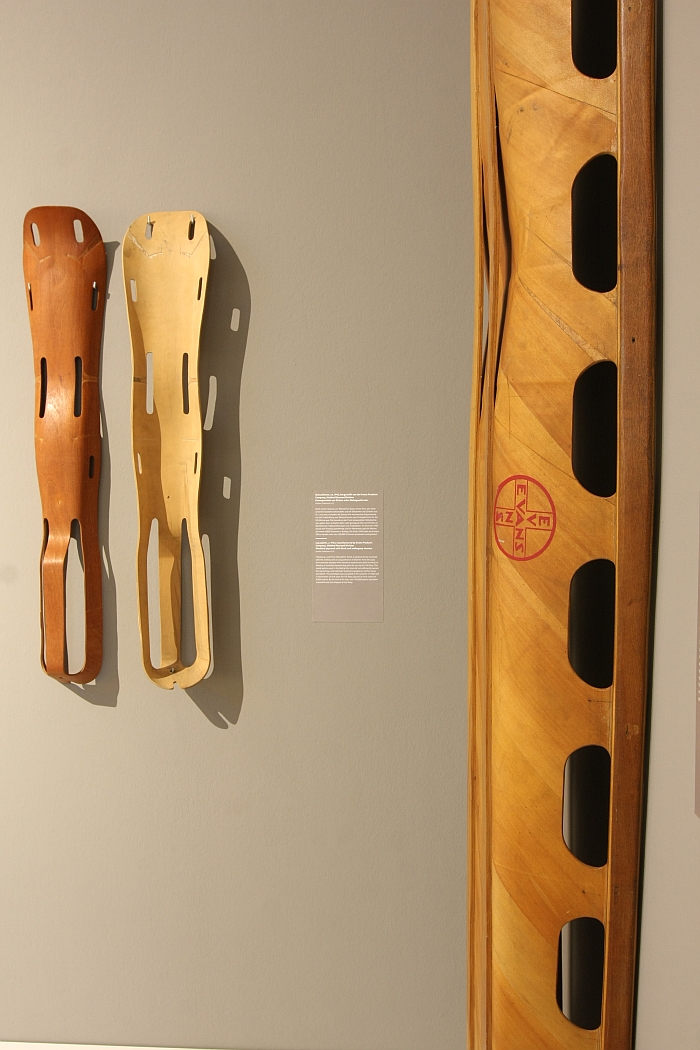
1940s moulded plywood leg splints by Charles and Ray Eames through Evans, as seen at Charles & Ray Eames. The Power of Design, Vitra Design Museum
Presented as four exhibitions spread across the Vitra Campus the largest firework, as it were, in the Vitra Design Museum’s Eames Celebration is the exhibition Charles & Ray Eames. The Power of Design in the Vitra Design Museum Gehry Building. In essence the Barbican’s exhibition, far from simply taking it over the Vitra Design Museum have much more taken it on, kept the vast majority, and extended it in those ways and places where their own collection and experience allows them to do that sensibly and meaningfully. And so in terms of information on the content of The Power of Design we refer you dear reader to our Barbican post; a couple of sections are missing in Weil am Rhein, but the presentation flow and foci are still the same, as are many of our thoughts. And so yes, there is still, for our taste, too little about the people Charles and Ray Eames, about their private world. But yes the marriage proposal letter from Charles to Ray is still there. And is still as charming as ever, not least for the fact it is written on official Cranbrook College of Art notepaper, as if an internal memo.
Beyond The Power of Design the Vitra Design Museum have added three smaller showcases: Kazam! in the Schaudepot which looks at the Eamses’ experimentation in terms of developing their plywood and fibreglass furniture; Play Parade in the Gallery, which takes a look at their their designs for children; and Ideas and Information in the Hadid Fire Station which presents a programme of films by Charles and Ray Eames. A cinematic programme which is complimented and extended in the other three exhibitions: films being everywhere and through their ubiquity one realises just how central films and film-making were to Charles and Ray Eames.
Back at the exhibition Eames and Hollywood at the ADAM Brussels Eames Demetrios, Director of the Eames Office and Charles Eames’ grandson, told us how important photography had been to the young Charles Eames, does, we venture, cautiously, the film work proceed from that interest in photography?
“I don’t think it exclusively evolved from the photography, or so much from Charles”, answers Eames, “on account of her training with Hans Hofmann and her experience in the art scene in New York, Ray was well aware of film and the experimentation of, for example the German expressionists. Charles had made his first films at Cranbrook before they met, and so its is something that was there from the very beginning of their relationship, and in the correspondence before they got married they talked about going to Hollywood to make short-films about, for example, architecture or the honest use of materials. And I think both saw it as a new communications method, they were both very interested in how to get ideas across and saw in film an interesting and valuable new option”
A position its use in An Eames Celebration would tend to underscore.
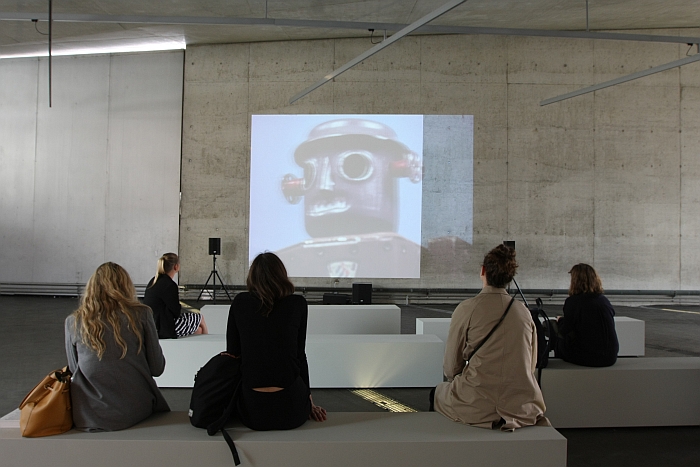
Watching the 1952 Charles and Ray Eames film Parade, part of Ideas and Information, Vitra Design Museum
As with The World of Charles and Ray Eames before it, An Eames Celebration is an extensive and comprehensive presentation in a very limited and selective fashion; which isn’t a contradiction, or a complaint, but a necessity of the subject matter. Back in 2015 we noted that in order to really do the Eames justice you would need five Barbicans. Per subject area. With An Eames Celebration even the expanse of the Vitra Campus can’t contain it all. Something neatly summed up by the presentation of Eames’ films.
Incorporating some 60 of the ca. 110 films the Eames’ made, the full programme runs for 8 hours and 10 minutes. Meaning each film is shown but once per day. Fine if you just want a glimpse of the Eames oeuvre, or are there all day solely to watch the films. Otherwise. Difficult. But what is the alternative? An hour of Eames films? Half an hour? Three? Sixteen? Either you show too little or you show too many. And either way the presentation is by necessity comprehensive, yet limited. Extensive, yet selective.
In opting for so many films the Vitra Design Museum are in many respects, following an Eamsien philosophy, “In all their own exhibitions the Eames’ employed an overload, be that of material or information” explains Jolanthe Kugler, “yet they didn’t demand that visitor study it all, rather organised the exhibitions in such a way that the visitors were left to take as much or as little as they wanted, from those sections that interest them, and thereby making it a more personal experience”
And be that within the individual exhibitions or in the choice between the individual exhibitions that is just what An Eames Celebration offers, the chance to focus on those sections and those aspects that interest the individual. And regardless if you choose to concentrate on, for example, furniture, film, experimentation, or explore the full range of their activities, you will find an informative and interesting exploration. And a lot of impetus for further research on your own. Which is arguably what any exhibition should leave you wanting to do. Not all do.
Away from the films, Play Parade presents a detailed, and for all hands on, exhibition of the more childish nature the Eames creativity including The Toy construction kit and their House of Cards, objects which despite their almost naive analogousness remain contemporary, the essentials of entertaining children not having evolved that far in the intervening decades, just the methods their parents choose; while Kazam! examines through selected prototypes and models how the Eames developed their furniture,
A key part of Kazam! is the eponymous device Charles and Ray used to mould their plywood seat shells, essentially a rubber bag which is inflated inside a mould pushing the plywood into shape as it grows. Aside from showing the pair’s primitive, DIY origins, the Kazam machine is also an excellent example of how they set about achieving what they wanted, how when the technology for their purposes wasn’t available, they looked at what was available, and how, if, they could appropriate it. As we learned at the exhibition Plywood: Material of the Modern World at the V&A Museum London, the rubber-bag-in-mould concept was developed in the 1910s by the brothers Loughead for the production of plywood aircraft body parts, and in developing and evolving the principles for their own needs Charles and Ray Eames acted much like Michael Thonet who a century earlier took a shipbuilding principle as the basis for his warm wood bending process. Interesting is also than when developing what would become their fibreglass chairs they again turned to a material, and a technology, that had been used to develop experimental aircraft wings.
Just as interesting as the objects on display is the fact that Kazam! is, arguably, the one part of the exhibition of which Charles and Ray Eames would disapprove, for as we learned in London they were very much the opinion that “the blood should not be shown”, that one shows results, not workings. We of course are firmly of the opinion that blood is the basis of life, its study helping us understand the organism from whence it came. Which is why for us an exhibition about a designer can never be bloody enough!
Touring exhibitions always change to meet the new site, and with the Gehry Building in Weil am Rhein being, arguably, the most idiosyncratic of all museums, presenting such a wide exhibition comes with the usual challenges. Challenges which the Vitra Design Museum team have risen to in a very pleasing manner; yes there is a lot of chairs on pedestals, but also a lot off intelligent use of the space, intelligent integrating of the exhibits into the Gehry geometry. Even if we’d argue Charles’s answers to the questions posed in the CCI Paris’s 1969 exhibition What is Design?, aren’t, for our money, optimally located. Being, for our money, a key element of understanding the Eames approach to design and therefore something that should be more central in the presentation. But they are there. And well worth finding.
Entertaining, informative, interesting a presentation as An Eames Celebration is, one should never forget that the initial curatorial work was undertaken by the Barbican London, something the Vitra Design Museum make a very open point of acknowledging. What the Vitra Design Museum have done is intelligently and pleasingly expanded the scope, and thereby the relevance of the exhibition, have taken some of the seeds sown in the Barbican, transplanted them on the Vitra Campus and allowed them to grow in a very natural fashion.
And also left out some of those things the Barbican ignored
Back in London we discussed Charles, Ray and the internet with Eames Demetrios, and later opined that for us it was clear that anyone as interested in modern communication methods and new technology as Charles and Ray Eames were, would have developed an App for such an exhibition. And App which was notable in London by its absence.
In the Vitra Design Museum it is still notable by its absence.
Something we are still very happy about.
Charles and Ray Eames must be experienced live, something An Eames Celebration ably demonstrates and invites, nay actively encourages, us all to do.
And remember, it could well be your last chance for a good couple of decades.
An Eames Celebration runs at the Vitra Design Museum, Charles-Eames-Strasse-2, 79576 Weil am Rhein until Sunday February 25th. Full details, including information on the accompanying fringe programme can be found at www.design-museum.de
- Plywood objects, as seen at Charles & Ray Eames. The Power of Design, Vitra Design Museum
- A collection of fibre glass chairs – and a video explaining the production, as seen at Charles & Ray Eames. The Power of Design, Vitra Design Museum
- Kazam! in the Vitra Design Museum Schaudepot
- Recreation of the 1964 film Think, as seen at Charles & Ray Eames. The Power of Design, Vitra Design Museum
- Structures created from Toy by Charles & Ray Eames, as seen at Play Parade, Vitra Design Museum Gallery
- Fribreglass seat shells, as seen in Kazam!, the Vitra Design Museum Schaudepot
- A splint sculpture by Ray Eames, as seen at Charles & Ray Eames. The Power of Design, Vitra Design Museum
- Paintings by Ray Eames, as seen at Charles & Ray Eames. The Power of Design, Vitra Design Museum
- Charles and Ray welcome guests personally to Ideas and Information in the Zaha Hadid Fire Station
- Powers of Ten by Charles and Ray Eames, as seen at Charles & Ray Eames. The Power of Design, Vitra Design Museum
- The 1948 Minimum Chair by Charles & Ray Eames, as seen at Charles & Ray Eames. The Power of Design, Vitra Design Museum
- Part of the recreation of Charles and Ray Eames contribution to the For Modern Living Exhibition, as seen at Charles & Ray Eames. The Power of Design, Vitra Design Museum
- Eames Chairs, as seen at Charles & Ray Eames. The Power of Design, Vitra Design Museum
- Eames aluminium chiars, and some of the prototypes, as seen at Charles & Ray Eames. The Power of Design, Vitra Design Museum
- Charles & Ray Eames. The Power of Design, Vitra Design Museum
Tagged with: A celebration, Charles and Ray Eames, eames, Schaudepot, Vitra, vitra campus, Vitra Design Museum, Vitra Design Museum Gallery
